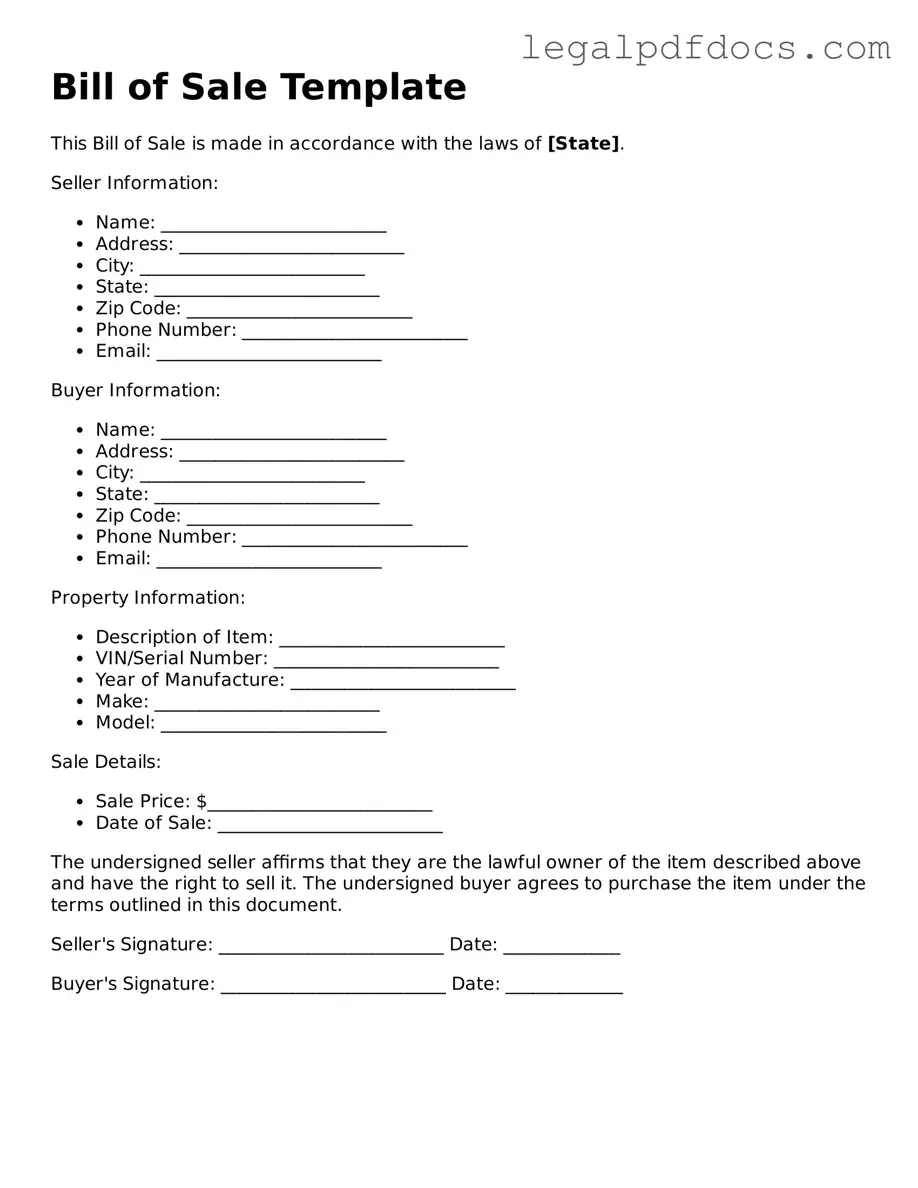The Bill of Sale form serves as a crucial document in the transfer of ownership for various types of personal property, including vehicles, furniture, and equipment. This form not only outlines the details of the transaction but also provides legal protection for both the buyer and the seller. Key components typically include the names and addresses of both parties, a description of the item being sold, the sale price, and the date of the transaction. Additionally, the form often includes a statement regarding the condition of the item, ensuring that the buyer is fully aware of what they are purchasing. By documenting the agreement, the Bill of Sale helps prevent misunderstandings and disputes that may arise after the sale. It can also serve as proof of ownership, which is especially important for items like cars or boats that require registration. Overall, this simple yet effective document plays a significant role in facilitating smooth transactions in everyday life.
